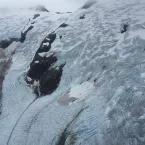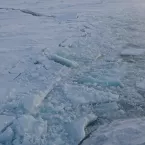Our Research
Related News & Stories

Climate talks lacking knowledge of permanent global impacts from glacier and ice sheet loss
The sea ice extent has been quickly growing, and by the end of October, ice covered most of the Arctic Ocean.
The summer melt season has come to a modest end. The summer of 2021 was relatively cool compared to the most recent years and September extent was the highest since 2014. It was nevertheless an eventful summer, with many twists and turns.
On September 16, Arctic sea ice likely reached its annual minimum extent of 4.72 million square kilometers (1.82 million square miles). The 2021 minimum is the twelfth lowest in the nearly 43-year satellite record.

Arctic sea ice has likely reached its minimum extent for the year, at 4.72 million square kilometers (1.82 million square miles) on September 16, 2021, according to scientists at the National Snow and Ice Data Center (NSIDC) at the University of C
The Arctic sea ice minimum extent is imminent. After a cool and stormy summer, this year’s minimum extent will be one of the highest of the past decade, despite the amount of multiyear ice standing at a near-record low.